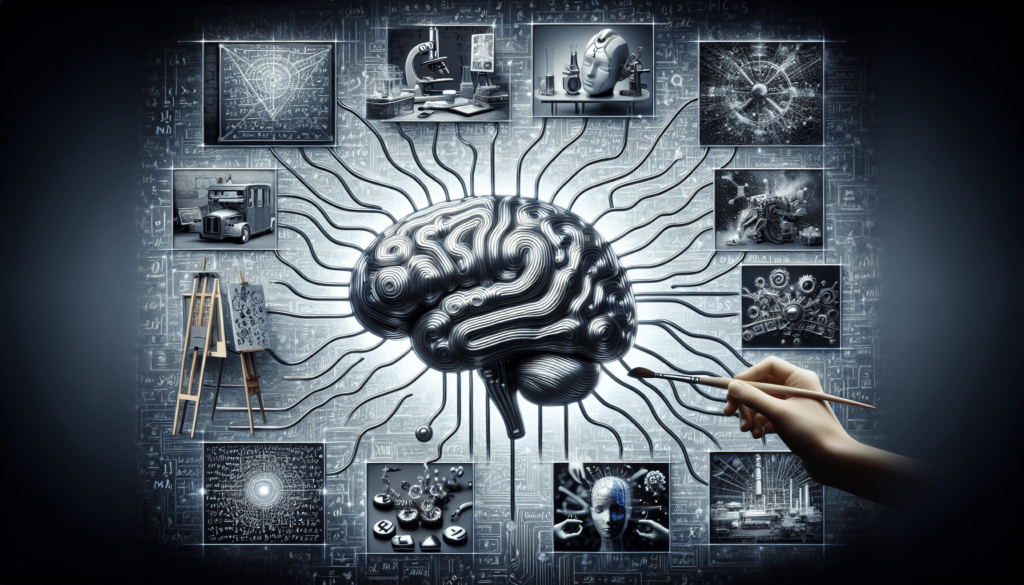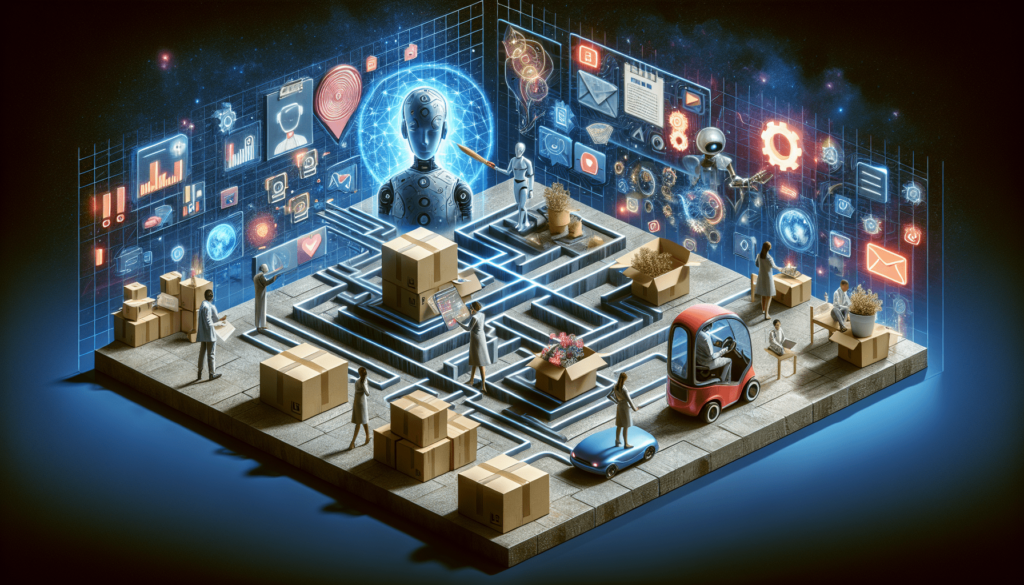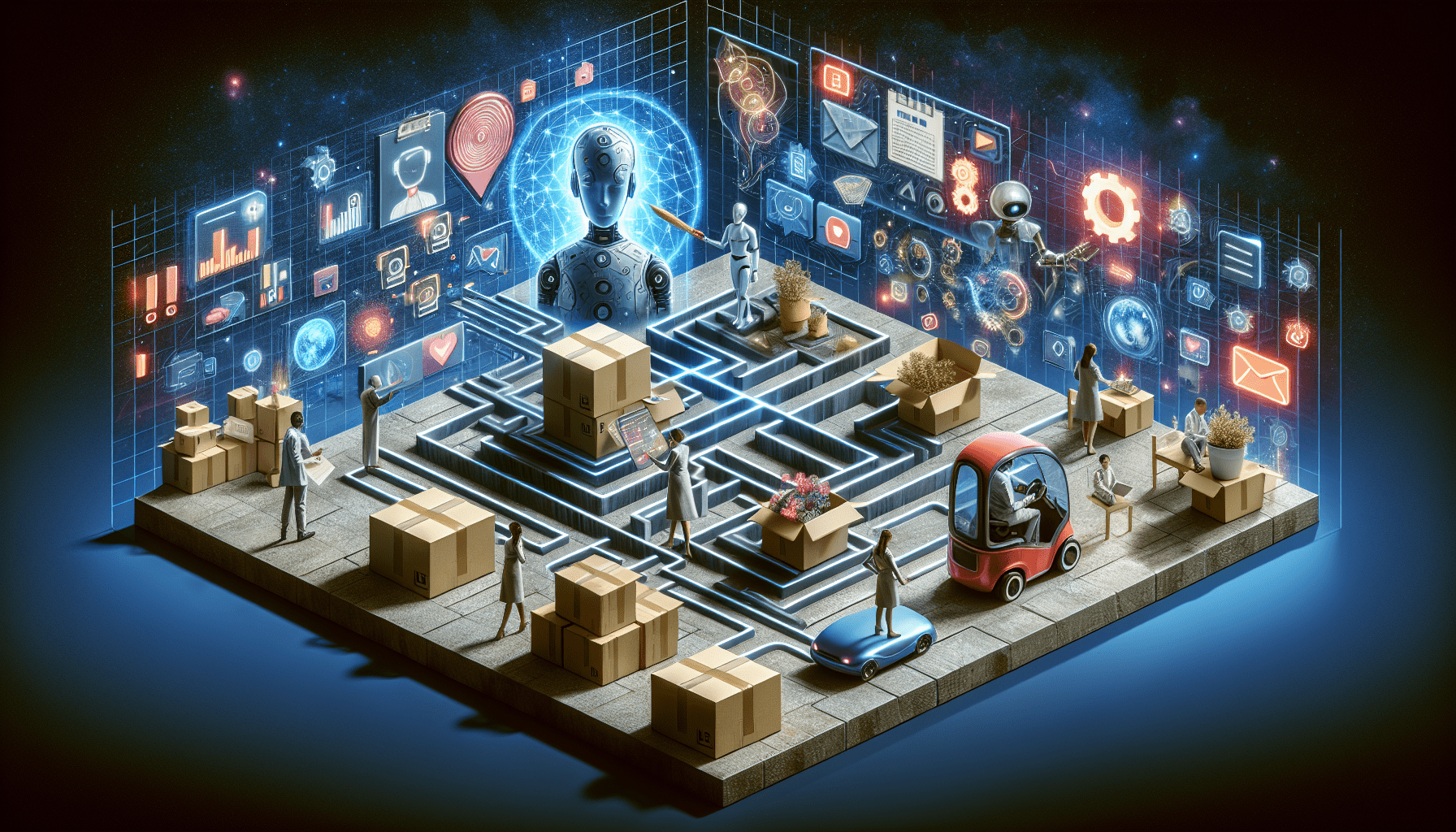In the ever-evolving world of artificial intelligence, one pressing question remains: Can AI truly generalize across a wide range of tasks? As exciting advancements are made in AI technology, it becomes crucial to assess its ability to apply learned knowledge to new, unfamiliar situations. This article explores the concept of generalization in AI, delving into its potential to transcend specific tasks and adapt to various domains. By understanding the challenges and potential solutions in achieving robust generalization, we can unlock the true potential of AI in revolutionizing our daily lives.
The Challenge of Generalization in AI
Generalization is a critical aspect of artificial intelligence (AI) systems. It refers to the ability of AI models to perform well on unseen data and tasks. However, achieving effective generalization can be challenging, especially when it comes to handling bias in training data, leveraging knowledge through transfer learning, adapting to different domains, evaluating performance, ensuring transparency with explainable AI, utilizing data augmentation, balancing overfitting and underfitting, selecting appropriate model architectures, and combining different AI techniques.
Bias in Training Data
Bias in training data is one of the primary challenges when it comes to achieving AI generalization. Training data is crucial as it forms the foundation upon which AI models learn. However, bias can arise from various sources such as the data collection process, the people involved in the data labeling, or inherent biases in the data itself. This bias can lead to skewed predictions and poor performance on diverse or underrepresented groups. It is important to carefully analyze and address bias in training data to improve generalization.
Transfer Learning
Transfer learning is a powerful technique that allows AI models to leverage knowledge gained from one task to perform well on another task. In transfer learning, a pretrained model trained on a large dataset is used as a starting point for a new task. This approach saves computational resources and enables faster convergence by harnessing the already learned features and representations. By transferring knowledge, AI models can generalize better and achieve higher performance on new tasks with limited amounts of task-specific data.
Domain Adaptation
Domain adaptation is a subset of transfer learning that focuses specifically on adapting models from one domain to another. A domain refers to a specific distribution of data, such as images of cars in a parking lot versus medical images. It is not uncommon for AI models trained on one domain to struggle when faced with data from another domain due to differences in distribution, feature space, or labeling. Domain adaptation techniques aim to bridge this gap by adapting models to new domains, allowing them to generalize well across different environments and datasets.
Understanding Bias in Training Data
To address bias in training data, it is crucial to first understand its role in AI generalization. Training data acts as a mirror through which AI models learn to make predictions. However, biases present in the training data can adversely affect the fairness, accuracy, and reliability of AI systems. Common types of bias include sampling bias (when the training data does not reflect the population), label bias (when labels are subjective or incomplete), and algorithmic bias (when the AI model learns biased patterns from the data). By acknowledging and understanding these biases, steps can be taken to mitigate them and improve generalization.
Types of Bias
There are various types of bias that can be present in training data. Some common examples include racial bias, gender bias, age bias, or bias based on socioeconomic factors. Recognizing these biases is crucial for ensuring fairness and avoiding discriminatory outcomes in AI systems. It is important to consider both explicit biases (overt biases present in the data) and implicit biases (unintentional biases that are learned by the AI model). By identifying and addressing these biases, AI models can generalize more effectively and produce unbiased and equitable results.
Addressing Bias
Addressing bias in training data is a multi-faceted process that involves several steps. First, it is important to have diverse and representative training data that includes examples from different demographics and backgrounds. Next, rigorous data preprocessing techniques can be employed to detect and mitigate bias. This involves identifying and removing biased samples, ensuring balanced representations, and performing debiasing techniques such as algorithmic adjustments. Finally, ongoing monitoring and evaluation of AI systems can help identify and correct any biases that emerge during deployment, ensuring continuous improvement in generalization.
What is Transfer Learning?
Transfer learning refers to the process of leveraging knowledge gained from one task (source domain) to improve performance on another task (target domain). Instead of training a model from scratch for the target task, a pretrained model, typically trained on a large dataset for a related task, is used as a starting point. The pretrained model’s learned representations are then fine-tuned or extended to adapt to the target task. By reusing the knowledge from previous tasks, transfer learning enables AI models to generalize better and achieve improved performance on new and distinct tasks.
Benefits of Transfer Learning
Transfer learning offers several benefits when it comes to AI generalization. Firstly, it allows AI models to learn from a large dataset that might not be available for the target task. This is especially important when the target task has limited labeled data. Transfer learning also reduces the computational resources required to train a model from scratch, as the pretrained model serves as a powerful starting point. Additionally, transfer learning enables models to leverage valuable knowledge and representations learned from related tasks, leading to faster convergence and better generalization.

Transfer Learning Techniques
There are various transfer learning techniques that can be employed to enhance generalization. One common approach is to use feature extraction, where the pretrained model’s lower layers are frozen, and only the higher layers are fine-tuned for the target task. This allows the model to retain the general features learned from the source domain while adapting to the specific features of the target domain. Another technique is called fine-tuning, where the entire pretrained model is fine-tuned for the target task using a smaller learning rate. This allows the model to adapt to both the high-level and low-level features of the target task. Selecting the appropriate transfer learning technique depends on the specific requirements of the target task and the available data.
What is Domain Adaptation?
Domain adaptation focuses on the challenges of adapting AI models from one domain to another. A domain refers to a specific distribution of data, which can contain variations in features, environment, or labeling. Domain adaptation aims to overcome the performance degradation that occurs when models trained on a source domain are applied to a different target domain. By adapting the model to the target domain, the AI system can achieve better generalization and perform well on tasks even when the target domain has different characteristics.
Challenges in Domain Adaptation
Domain adaptation comes with its own set of challenges. One major hurdle is the domain shift, which refers to the differences in distribution between the source and target domains. This can lead to a degradation in performance when the model is applied to the target domain due to the discrepancy in data characteristics. Another challenge is the lack of labeled data in the target domain, making it difficult to fine-tune the models. Additionally, domain adaptation techniques need to strike a balance between preserving the source domain knowledge and adapting to the target domain, as over-adaptation can result in losing valuable information.
Domain Adaptation Methods
Various methods and algorithms have been developed to tackle the challenges of domain adaptation. Some common approaches include feature-based methods, where the model’s shared feature spaces between the source and target domains are aligned. This ensures that the learned feature representations are similar, reducing the impact of the domain shift. Another approach is to use domain adversarial training, where a domain discriminator is added to the model to explicitly minimize the domain discrepancy. This encourages the model to learn domain-invariant representations, thus improving generalization. These methods, along with others, can be employed based on the specific characteristics of the domains and the available data.
Testing on Similar Tasks
When evaluating AI generalization performance, testing on similar tasks is a crucial step. This involves assessing how well the AI model performs on tasks that are closely related to the training task. By measuring performance on similar tasks, it is possible to understand the extent of generalization achieved by the model. If the model performs well on similar tasks, it is an indication that it has successfully learned the underlying patterns and can generalize effectively.
Testing on Dissimilar Tasks
Testing on dissimilar tasks is equally important to evaluate AI generalization. Dissimilar tasks refer to tasks that are distinctly different from the training task. By assessing performance on dissimilar tasks, it is possible to assess how well the model can adapt and generalize to new and novel scenarios. If the model performs well on dissimilar tasks, it demonstrates robust and versatile generalization capabilities.
Benchmarking Generalization
Benchmarking generalization involves comparing the performance of AI models on different tasks and domains. It allows for the identification of models that exhibit superior generalization skills. By creating comprehensive benchmarks that cover a wide range of tasks and domains, it is possible to understand the strengths and weaknesses of different models. This helps researchers and practitioners in the field to make informed decisions and improve the overall generalization capabilities of AI systems.
Explainable AI Techniques
Explainable AI (XAI) techniques play a crucial role in improving generalization. XAI refers to the ability to understand and explain the decisions and behavior of AI models. By providing explanations for the model’s predictions and highlighting the reasoning behind them, XAI enables users to trust, interpret, and evaluate the model’s performance. This transparency and interpretability help identify any biases, limitations, or contextual dependencies that may affect the model’s generalization.

Interpretability for Generalization
Interpretability is a key aspect of improving generalization. By understanding how the model makes decisions, it is possible to identify situations where the model might struggle or perform poorly. This enables targeted improvements and adjustments to enhance generalization. Interpretability also helps in identifying any specific task dependencies that might be present, allowing for fine-tuning and customization to specific contexts or domains.
Addressing Specific Task Dependencies
To improve generalization, it is important to address specific task dependencies that might be present in the training data. This involves analyzing the data and identifying any biases, dependencies, or correlations that can affect the model’s predictions. By understanding these task-specific factors, it is possible to develop strategies and techniques to mitigate their impact and improve generalization. Task-specific handling of dependencies ensures that the model can make accurate predictions across a wide range of tasks and scenarios.
Benefits of Data Augmentation
Data augmentation is a technique used to artificially increase the size and diversity of the training data. By applying various transformations to the existing data, such as rotations, translations, and distortions, data augmentation introduces additional variations that the model can learn from. This helps in improving generalization by exposing the model to a broader range of scenarios and reducing overfitting that can occur with limited training data.
Data Augmentation Techniques
There are various data augmentation techniques that can be applied to improve generalization. Image data augmentation techniques include random cropping, flipping, rotation, scaling, and color manipulation. Text data augmentation techniques involve randomly replacing words with synonyms, adding noise, or shuffling sentence order. Audio data augmentation techniques include adding background noise, pitch shifts, or time stretching. These techniques can be customized based on the specific requirements of the task and the available data.
Optimizing Data Augmentation
To optimize data augmentation, it is important to strike a balance between introducing diversity and preserving the integrity of the data. Applying too many transformations or introducing overly complex distortions can lead to a loss of information or the creation of unrealistic samples. It is also important to ensure that the augmented data still represents the distribution of the target domain. By carefully selecting and fine-tuning data augmentation techniques, it is possible to improve generalization and enhance the performance of AI models.
Understanding Overfitting and Underfitting
Balancing overfitting and underfitting is crucial for achieving effective generalization. Overfitting occurs when the AI model performs well on the training data but fails to generalize to unseen data due to memorization of training examples. Underfitting, on the other hand, occurs when the model fails to capture the underlying patterns in the data and performs poorly on both training and unseen data. Striking the right balance between the two ensures that the model learns the relevant patterns in the data and generalizes effectively to new tasks and scenarios.
Regularization Techniques
Regularization techniques help in balancing overfitting and underfitting by reducing the model’s complexity and preventing it from becoming overly specialized to the training data. Common regularization techniques include L1 and L2 regularization, dropout, and early stopping. These techniques introduce regularization penalties or add constraints to the model’s architecture, encouraging it to learn more generalizable representations. By effectively implementing these techniques, it is possible to achieve better generalization and reduce the risks of overfitting and underfitting.
Model Complexity and Training Size
The complexity of the model and the available training size are critical factors that impact generalization. A model that is too complex risks overfitting to the training data, while a model that is too simple might fail to capture the underlying patterns and suffer from underfitting. The complexity of the model should be chosen based on the task complexity and the available training size. If the training size is limited, a simpler model with fewer parameters might be more suitable to avoid overfitting.
Choosing Appropriate Architectures
The selection of appropriate model architectures is crucial for generalization. Different tasks and domains require different architectures to effectively capture relevant features and patterns. Convolutional Neural Networks (CNNs) are commonly used for image-related tasks, Recurrent Neural Networks (RNNs) for sequential data, and Transformer models for natural language processing tasks. Architectures can also be customized by adding or modifying layers to cater to task-specific requirements. By carefully selecting and designing architectures, AI models can improve generalization and achieve better performance on a wide range of tasks.
Modifying Pre-trained Models
Modifying pre-trained models is a valuable approach to enhance generalization. Pre-trained models, such as those trained on large-scale datasets like ImageNet or BERT, offer rich feature representations that can be leveraged for various tasks. By fine-tuning or extending pre-trained models, it is possible to adapt them to specific task requirements and improve generalization. This process involves selectively freezing or updating specific layers, adding task-specific layers, or applying transfer learning techniques. Modifying pre-trained models allows for efficient knowledge transfer and saves computational resources when training from scratch is not feasible.
Neural Network Design Principles
To achieve better generalization, it is important to adhere to certain design principles when building neural networks. These principles include avoiding excessive model complexity, using appropriate activation functions, implementing regularization techniques, and ensuring proper initialization of model weights. Additionally, it is important to leverage techniques like batch normalization, dropout, or residual connections to help stabilize training and improve generalization. By following these design principles, AI models can have better stability, robustness, and generalization capabilities.
Ensemble Methods
Combining AI techniques can significantly improve generalization. Ensemble methods involve training multiple models with different initializations or using different architectures and combining their predictions. This approach helps mitigate the risk of overfitting by capturing multiple perspectives and reducing the impact of individual model biases. Ensemble methods can include techniques such as bagging, boosting, or stacking. By leveraging the collective intelligence of multiple models, ensemble methods enable improved generalization and higher performance on diverse tasks.
Multi-Task Learning
Multi-task learning is another powerful technique that enhances generalization. Instead of training separate models for each task, multi-task learning involves training a single model to perform multiple related tasks simultaneously. This approach allows the model to learn shared representations and leverage the similarities between tasks. By doing so, the model can generalize better as it learns to capture the common underlying patterns across tasks. Multi-task learning is particularly useful when there is limited labeled data available for each individual task.
Hybrid Approaches
Hybrid approaches that combine multiple AI techniques can further enhance generalization. By integrating transfer learning, domain adaptation, data augmentation, explainable AI, and other techniques, it is possible to create powerful models that achieve improved performance on a wide range of tasks and domains. Hybrid approaches can be customized based on the specific requirements and characteristics of the problem at hand. By synergistically combining different AI techniques, it is possible to overcome the challenges of generalization and push the boundaries of AI capabilities.
In conclusion, achieving effective generalization in AI is a complex and multifaceted challenge. Addressing bias in training data, leveraging knowledge through transfer learning, adapting to different domains, evaluating performance, ensuring transparency with explainable AI, utilizing data augmentation, balancing overfitting and underfitting, selecting appropriate model architectures, and combining different AI techniques all play critical roles. By understanding and implementing these techniques and approaches, AI systems can generalize well across different tasks, making significant advancements in various domains and applications.
